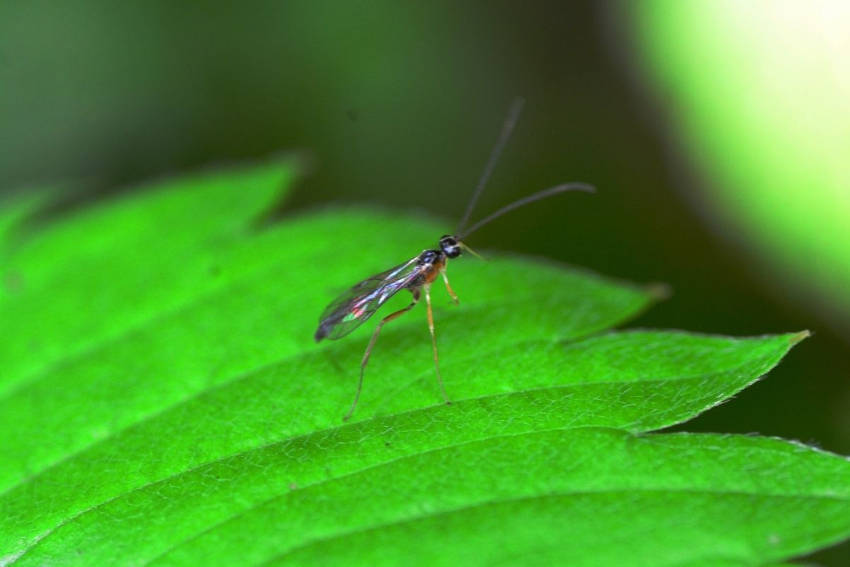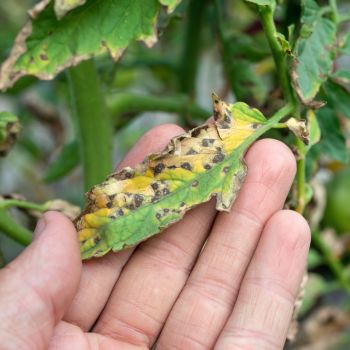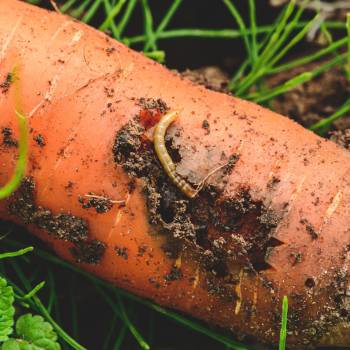Fungus gnats are most familiar as the tiny, black insects buzzing around houseplants and greenhouse containers. And while they're certainly an annoyance as they make a beeline for the gardener's face, they can also cause genuine problems for plants.
The insect's life is divided into four stages: egg, larvae, pupae, and adult. At the larvae stage they can stunt a plants growth or even kill it off altogether. Couple this danger with the fast rate of reproduction, and the first sign of these creatures is a warning that shouldn't be ignored.
Recognising Fungus Gnats
Fungus gnats hail from a variety of species, but the ones which can be dangerous to plants belong to the Sciaridae family. With a superficial resemblance to tiny mosquitoes, in their adult form they're around 3mm long, black or dark grey in colour, and usually found around moist compost or soil.
As adults, they're an irritant as they buzz and fuss around your plants, but their real danger is that a single female can lay up to 300 eggs over their week-long adult lifetime. The eggs are tiny, but can sometimes be spotted around the base of plants.
Around four to six days after being laid, the eggs hatch into 4mm long, whitish-translucent larvae with black heads, and that's when the trouble starts. The larvae burrow down into the soil and begin feeding unseen on organic matter, with a preference for material that's starting to rot down. This subsurface behaviour along with their tiny size makes the larvae almost impossible to spot.
And unfortunately, while the larvae prefer to feed on dead and decaying matter, they'll happily move on to living material if easier pickings are scarce.
If they start feeding on a plant's roots, it can slow or halt its growth, and younger plants with immature root systems can be killed off altogether. But even adult plants can show signs of stress including yellowing leaves, wilting, and an unexplained failure to thrive. Weaker plants can eventually succumb entirely.
And to make matters worse, fungus gnat larvae are prime carriers of a number of fungal diseases, including phytophthora, verticillium, and rhizoctonia.
Which Plants Are at Risk?
The fungus gnat larvae can attack nearly any plant, but their preference is to live in moist soil that contains plenty of organic matter. This makes houseplants and greenhouse seedlings a particular target, thanks to their rich compost mix and frequent watering.
Carnations, geraniums, violets, and other popular flowers are other common targets, especially as many of these plants are susceptible to root rot in damp conditions, making an easier meal for the larvae. However, fungus gnats aren't fussy, and given moisture and a food source they'll survive in almost any plant's soil.
After a couple of weeks of feeding, the larvae enter a pupae stage, from which they emerge as adults after a further four to six days. From here the gnats are airborne and at their most visible, and will reproduce to start the cycle over again.
Fungus Gnat Prevention and Control
The short life cycle of the fungus gnat means that once an infestation takes hold, it's likely you'll have several or all development stages of the insect present at once. This means control is difficult, but by attacking on all fronts it's possible to reduce the severity of the problem, and even clear it altogether. Here are some ideas.
- For new plants, sterilise the soil before sowing or transplanting to kill off any eggs, larvae, or pupae present. This can be done by heating it in a microwave or conventional oven, or by liberally drenching it with boiling water.
- Avoid re-using compost from plant to plant or year to year, to prevent the buildup of insect eggs and pathogens.
- Don't overwater plants as this encourages algal growth, providing a food source for the larvae. Worse, it can encourage root rot, making it more likely the larvae will start feeding on them.
- Keep containers, trays, and saucers clean and free of algae, particularly when re-using them.
- Using a mulch can prevent egg laying to reduce infestation, with heavier mulches also trapping emerging adults in the soil to break the cycle.
- For infested plants, using widely available sticky insect traps can help take the adults out of the picture, but also risks harm to beneficial insects. While this may not be an issue for houseplants, think carefully before using insect traps in a greenhouse or outdoors.
Liquid Treatments
A final option is to use an organic pesticide, such as eco-neem. Make up the product into a liquid according to the instructions on the bottle, and apply to the soil surface. This will take care of the eggs and larvae, but eco-neem solution can also be used as a spray to deal with the adults buzzing around the plants.
As with all insecticides, use with care and be aware of the potential side effects, especially if used outdoors. Eco-neem only affects pest insects which feed on plants, and is thought to be safe for most pollinators, but any blanket disruption to the food chain should be avoided to protect the ecology of your garden.
Repeat the drenching after a few days to clear up any new eggs laid by surviving adults in the meantime. It might also be a good idea to finish with an organic fungicide to deal with any diseases the gnats have brought along with them.
But whichever of these approaches you use, it's important not to take fungus gnats lightly. They may be a simple annoyance in adult form, but their larvae could be working away out of sight to seriously damage your plants.






